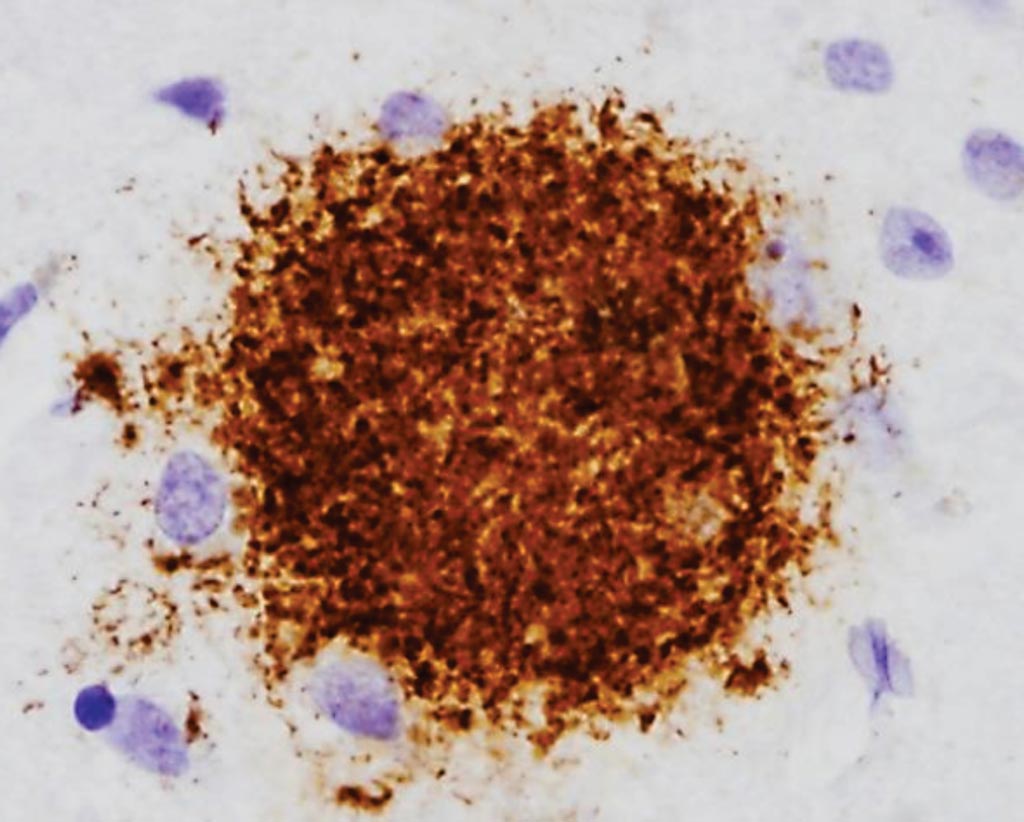Blood Test Identifies Key Alzheimer's Marker
By LabMedica International staff writers
Posted on 02 Aug 2017
Decades before people with Alzheimer's disease develop memory loss and confusion, their brains become dotted with plaques made of a sticky protein, called amyloid beta that is thought to contribute to the disease and its progression.Posted on 02 Aug 2017
Currently, the only way to detect amyloid beta in the brain is via positron emission tomography (PET) scanning, which is expensive and not widely available, or a spinal tap, which is invasive and requires a specialized medical procedure.

Image: Histopathology of an immunostained diffuse amyloid beta plaque in a brain sample from a patient with Alzheimer’s disease (Photo courtesy of Dr. Dimitri P. Agamanolis, MD).
Scientists at the Washington University School of Medicine (St. Louis, MO, USA) studied 41 people ages 60 and older. Twenty-three were amyloid-positive, meaning they had signs of cognitive impairment. PET scans or spinal taps in these patients also had detected the presence of amyloid plaques in the brain or amyloid alterations in the cerebrospinal fluid. They also measured amyloid subtypes in 18 people who had no buildup of amyloid in the brain.
The team measured blood levels of three amyloid subtypes: amyloid beta 38, amyloid beta 40, and amyloid beta 42 using highly precise measurement by mass spectrometry to see if any correlated with levels of amyloid in the brain. To measure amyloid levels, production and clearance over time, they drew 20 blood samples from each person over a 24-hour period.
Amyloid beta (Aβ) isoforms have a half-life of approximately three hours in plasma. Aβ38 demonstrated faster turnover kinetics compared with Aβ40 and Aβ42. Faster fractional turnover of Aβ42 relative to Aβ40 and lower Aβ42 and Aβ42/Aβ40 concentrations in amyloid-positive participants were observed. They found that levels of Aβ42 relative to Aβ40 were consistently 10% to 15% lower in the people with amyloid plaques. By averaging the ratio of Aβ42 to Aβ40 over each individual's 20 samples, the scientists could classify people accurately as amyloid-positive or amyloid -negative 89% of the time. On average, any single time point was also about 86% accurate.
Randall J. Bateman, MD, a Distinguished Professor of Neurology and the study's senior author said, “Our results demonstrate that this amyloid beta blood test can detect if amyloid has begun accumulating in the brain. This is exciting because it could be the basis for a rapid and inexpensive blood screening test to identify people at high risk of developing Alzheimer's disease.” The study was published on July 19, 2017, in journal Alzheimer's and Dementia.
Related Links:
Washington University School of Medicine








 (3) (1).png)





